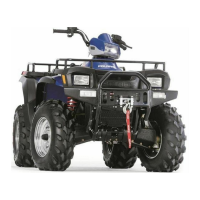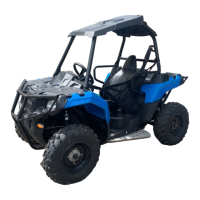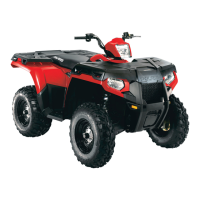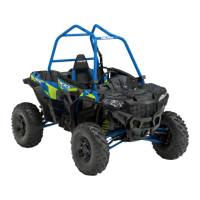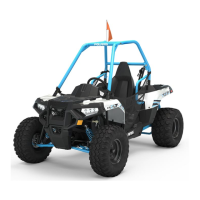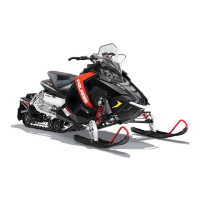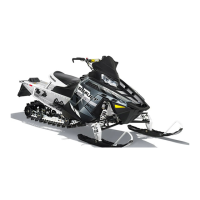MAINTENANCE
2.23
RADIATOR
1. Check radiator air passages for restrictions or
damage.
2. Carefully straighten any bent radiator fins.
3. Remove any obstructions with compressed air or
low pressure water.
COOLING SYSTEM
PRESSURE
TEST
Refer to Page 3.6 for pressure test procedure.
COOLANT LEVEL
INSPECTION
W ARNING
Never remove the radiator pressure cap when the
engineiswarmorhot. Escapingsteamandfluidcan
causesevereburns. Theenginemustbe allowedto
cool before removing the pressure cap.
Therecover ybott le(A) ,locat edont helef ts ideoft he
machine,mus tbemaintainedbetweentheminimum
and m axim um levels.
A
Withthe engineat operatingtemperature, thecoolant
level should be between t he upper and lower m ar ks
on t he coolant reser voir. If it is not:
1. Remove reservoir cap. Verify the inner splash
cap vent hole is clear and open.
2. Fill reservoir to upper mark with Polaris Premium
60/40 Anti Freeze / Coolant (PN 2871323)ora
mixture of antifreeze and distilled water as
required for freeze protection in your area.
3. Reinstall cap.
NOTE: If overheating is evident, allowsystemto cool
completely and check coolant level in the radiator.
Inspect for signs of trapped air in system.
RADIATOR COOLANT LEVEL
INSPECTION
NOTE: This procedure is only required if the cooling
system has been drained for maintenance and/or
repair . However, if the recovery bottle has run dry, or
if overheating is evident, the level in the radiator
should be inspected and coolant added if necessary.
W ARNING
Never remove the radiator pressure cap when the
engineiswarmorhot. Escapingsteamandfluidcan
causesevereburns. Theenginemustbe allowedto
cool before removing the pressure cap.
NOTE: Use of a non-standard pressure cap will not
allow the recovery system to function properly.
To access the radiator pressure cap:
Remove front cover by placing your fingers under the
front of the cover and pull upward.
Pressure Cap
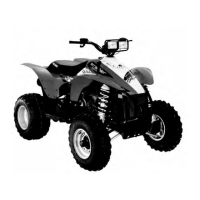
